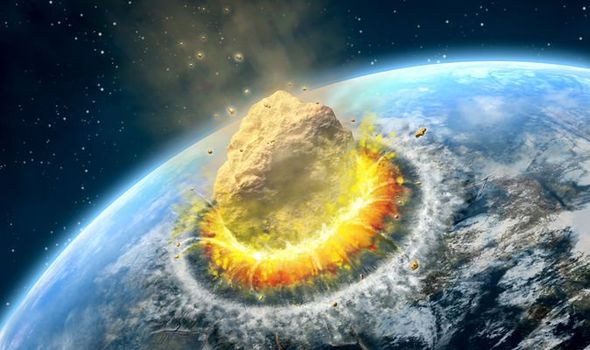AN ASTEROID big enough to end civilisation should it ever hit will approach our planet in April, NASA’s asteroid trackers have found.
The asteroid is listed by NASA’s Center for Near Earth Object Studies’ (CNEOS) in California, US. The asteroid has been officially called 52768 (1998 OR2) and is estimated measure up 2.5 miles (4.1km) across.
An object this big could potentially kill millions of people if it ever hit the planet in the distant future.
NASA estimates the rock is heading our way at speeds of about 8.7km per second or 19,461mph (31,320kmh).
At this rate, the asteroid will close-in on Earth on April 29.
When this happens, NASA said the asteroid will make a “close approach” to our planet.
According to the Planetary Society, an asteroid bigger than 0.6 miles (1km) across is big enough to threaten global destruction.
Astronomers estimate such objects have a one in 50,000 chance of hitting Earth every 100 years.
The Planetary Society lists the following impacts: “A crater of 10km or more: global devastation and possible collapse of civilisation.”
Dr Bruce Betts from the international group of astronomers said: “Small asteroids – few metres – hit frequently and burn up in the atmosphere and do little damage.
“Chelyabinsk size asteroids – about 20m that hit in 2013 – create shock waves that shatter windows and cause injuries.
“Tunguska sized – about 40m that hit Siberia in 1908 – could completely destroy a city or create a tsunami.
“Larger asteroids that hit on average less often could cause regional destruction.
“Even larger asteroids that hit even less frequently could cause a global catastrophe.”
The destructive potential of space rocks this big was also outlined in a 2018 report published by the US National Science and Technology Council.
The National Near-Earth Object Preparedness Strategy reads: “Objects close to and larger than one kilometre can cause damage on a global scale.
“They can trigger earthquakes, tsunamis, and other secondary effects that extend far beyond the immediate impact area.”
For comparison, the asteroid that is believed to have killed the dinosaurs measured about six miles (10km) across.
NASA estimates Asteroid 1998 OR2 measures somewhere between 0.9 miles and 2.54 miles (1.5km and 4.1km) in diameter.
The space rock was spotted flying around the Sun in 1987 and NASA confirmed it’s orbit on June 30, 1987.
Astronomers have classed the rock as a “potentially hazardous” NEO or near-Earth object.
But just how close does NASA expect the asteroid to come to Earth next month?
At its closest, the space rock will approach our planet from about 0.04205 astronomical units.
One astronomical unit is the average distance from our planet to the Sun – about 93 million miles (149.6 million km).
Asteroid OR2 will drastically cut this down to just 3.9 million miles (6.29 million km) on April 29.
In other words, the space rock is expected to miss us by about 16.36 times the distance from Earth to the Moon.
Dr Betts said: “There are a few asteroids that currently are known to have a low probability of hitting Earth in tens to hundreds of years.
“For example, one of the highest probabilities currently is an approximately 37m diameter asteroid called 2000 SG344 that has a 1 in 1100 chance of impact in 2071.
“But these always are based on asteroid observations that have uncertainties in them.”













![Hotstar Premium Cookies 2019 [*100% Working & Daily Updated*] Hotstar Premium Cookies 2019 [*100% Working & Daily Updated*]](https://tahav.com/wp-content/uploads/2019/11/Hotstar-Premium-Cookies-Free-100x70.jpg)



